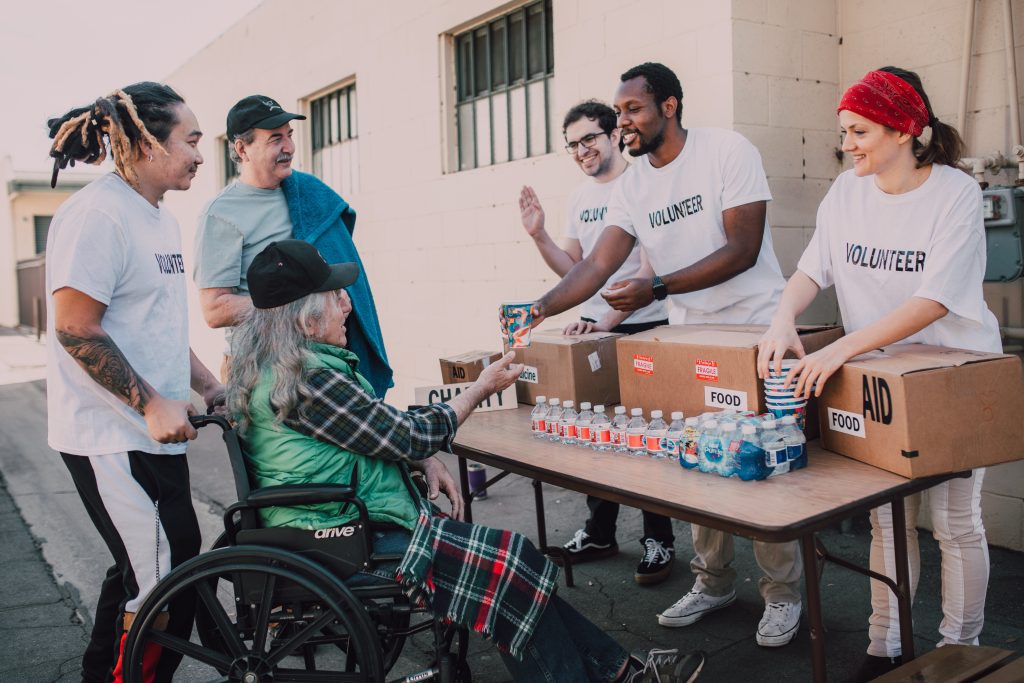
My wife and I had always been very traditional in our Valentine’s Day gift-giving, such as me buying fancy chocolates for her or she buying a bottle of premium liquor for me. But last year, she gave me the most heartwarming Valentine’s Day gift I could have ever imagined.
Shortly before the holiday, she approached me about changing that tradition. She asked: did sweets or alcohol truly convey our affection for each other? Was it more important to stick to tradition or to give gifts that would promote happiness and well-being for the other person and the world at large?
Instead of candy and liquor, my partner proposed giving gifts that would benefit our mental and physical well-being, as well as the well-being of others, by donating to charitable organizations in each other’s name.
She shared an article she had read about a study that found that people who give to charity are happier than those who don’t. The study had given participants money and asked them to spend it either on themselves or on others. Those who spent it on others felt greater happiness.
Not only that, but giving to charity also had positive effects on physical health. Another study showed that participants who gave to others experienced a significant decrease in blood pressure, a result not seen in those who spent the money on themselves.
With this in mind, my thoughtful spouse suggested we try an experiment: for Valentine’s Day, we would give to charity in each other’s name. She argued that for the same amount of money, we would get back something much more rewarding. This way, we could make each other happier and healthier and help others at the same time, maximizing the impact of our spending. And on top of that, it could even improve our relationship. A triple win!
I wholeheartedly agreed with her proposal. We decided to donate $50 per person, and keep our gifts a secret from each other until we exchanged them at a restaurant on Valentine’s Day.
Although I couldn’t predict my partner’s choice, I had an idea of the direction she might take. We had researched charities before and wanted to find organizations where our limited dollars would have the greatest impact on saving lives. We discovered excellent charity evaluators, like GiveWell and The Life You Can Save, which identified the most effective charities and made our choices easy. These data-driven evaluators are part of the effective altruism movement, which aims to maximize the impact of our giving by ensuring that every dollar is used to do the most good. I was confident that my partner would select a charity recommended by a reputable evaluator.
On Valentine’s Day, we went to our favorite Italian restaurant, close to our home. After a delicious cheesecake, it was time for our gift exchange. My partner presented her gift first, a donation to the Against Malaria Foundation. With her $50 gift in my name, she purchased 20 large bed nets that would protect families in developing countries from deadly malaria-carrying mosquitoes. For my own portion of the gift exchange, I gave $50 to GiveDirectly. This charity transfers money directly to recipients in some of the poorest villages in Africa, who are able to use the money as they see fit. It is like giving money directly to the homeless, except that dollars go much further in East Africa than in the United States.
We were so thrilled by each other’s gifts! They were so much better than any chocolate or alcohol could have been. We both helped each other save lives and felt great about doing so in the context of a gift for the other person. We decided to make this experiment a new tradition for our family.
It’s not uncommon for people to stick with traditional gift-giving practices, such as buying chocolates or jewelry, on Valentine’s Day. However, it’s important to remember that just because something is traditional or has always been done a certain way, doesn’t mean it’s the best or most meaningful option. This is where the concept of status quo bias comes in. Status quo bias is the tendency for people to stick with what is familiar or currently in place, rather than considering alternative options.
Another cognitive bias that can prevent experimentation with gift-giving is loss aversion. Loss aversion is the tendency for people to strongly prefer avoiding losses to acquiring gains. In the context of Valentine’s Day gifts, this might manifest as a fear of straying from traditional gift-giving practices because of the potential for disappointment or rejection from the recipient. People may be afraid of giving a gift that is perceived as less valuable or less romantic, and as a result, may stick to the familiar rather than trying something new.
However, as my story above illustrates, experimenting with different types of gifts can be extremely rewarding and meaningful for both the giver and the receiver. It was the most romantic Valentine’s Day present I ever received, and it made me realize how much better Valentine’s Day can be for myself, my spouse, and people all around the world. Instead of being held back by status quo bias and loss aversion, it’s important to remember that the true value of a gift lies in its ability to bring happiness and well-being to the recipient, and not necessarily in its monetary value or how it compares to traditional gifts. All it takes is a conversation about showing true love for your partner by improving her or his health and happiness, as well as the well-being of the global community. It may seem unconventional, but it is a unique way to celebrate love and make a difference in the world. So, next time you consider a Valentine’s Day gift, it’s worth thinking about how your gift can make a positive impact on your partner, on yourself and on the world.
Key Take-Away
Gifts promoting well-being via charity donations redefine love’s expression, enriching lives globally..>Click to tweet
Image credit: RDNE Stock Project
Originally published in Disaster Avoidance Experts on December 10, 2023
Dr. Gleb Tsipursky was lauded as “Office Whisperer” and “Hybrid Expert” by The New York Times for helping leaders use hybrid work to improve retention and productivity while cutting costs. He serves as the CEO of the boutique future-of-work consultancy Disaster Avoidance Experts. Dr. Gleb wrote the first book on returning to the office and leading hybrid teams after the pandemic, his best-seller Returning to the Office and Leading Hybrid and Remote Teams: A Manual on Benchmarking to Best Practices for Competitive Advantage (Intentional Insights, 2021). He authored seven books in total, and is best know for his global bestseller, Never Go With Your Gut: How Pioneering Leaders Make the Best Decisions and Avoid Business Disasters (Career Press, 2019). His cutting-edge thought leadership was featured in over 650 articles and 550 interviews in Harvard Business Review, Forbes, Inc. Magazine, USA Today, CBS News, Fox News, Time, Business Insider, Fortune, and elsewhere. His writing was translated into Chinese, Korean, German, Russian, Polish, Spanish, French, and other languages. His expertise comes from over 20 years of consulting, coaching, and speaking and training for Fortune 500 companies from Aflac to Xerox. It also comes from over 15 years in academia as a behavioral scientist, with 8 years as a lecturer at UNC-Chapel Hill and 7 years as a professor at Ohio State. A proud Ukrainian American, Dr. Gleb lives in Columbus, Ohio. In his free time, he makes sure to spend abundant quality time with his wife to avoid his personal life turning into a disaster. Contact him at Gleb[at]DisasterAvoidanceExperts[dot]com, follow him on LinkedIn @dr-gleb-tsipursky, Twitter @gleb_tsipursky, Instagram @dr_gleb_tsipursky, Facebook @DrGlebTsipursky, Medium @dr_gleb_tsipursky, YouTube, and RSS, and get a free copy of the Assessment on Dangerous Judgment Errors in the Workplace by signing up for the free Wise Decision Maker Course at https://disasteravoidanceexperts.com/newsletter/.




